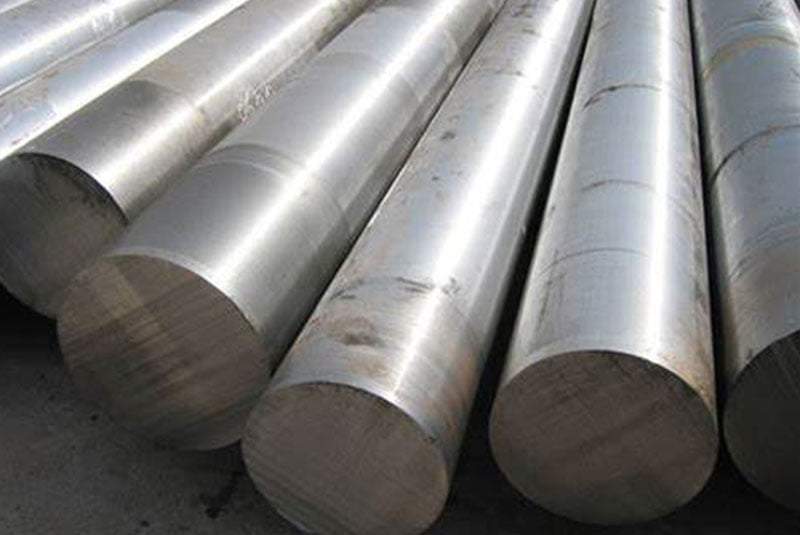Introduction

In the realm of materials science, carbon steel stands as a cornerstone, renowned for its versatility, strength, and affordability. Its widespread use across industries, from construction to manufacturing, stems from its unique balance of properties, making it an indispensable material for a vast array of applications. However, navigating the diverse landscape of carbon steel grades can be a daunting task, given the multitude of designations and their subtle variations. This comprehensive guide delves into the world of carbon steel grades, equipping you with the knowledge to decipher their nuances and select the appropriate grade for your specific needs.
Anatomy of a Carbon Steel Grade
The designation of a carbon steel grade typically follows a standardized format, providing valuable information about its composition and properties. Let’s unravel the meaning behind these codes:
The First Digit: AISI Series
The first digit indicates the steel’s classification within the American Iron and Steel Institute (AISI) system. Common AISI series for carbon steel include:
- AISI 1xxx: Low carbon steels (carbon content < 0.30%)
- AISI 2xxx: Medium carbon steels (carbon content 0.30-0.60%)
- AISI 3xxx: High carbon steels (carbon content 0.60-1.50%)
The Second Digit: Modification
The second digit signifies any modifications to the steel’s basic composition. Common modifications include:
- 0: No modification
- 1: Resulfurized
- 2: Resulfurized and rephosphorized
The Last Two Digits: Carbon Content
The last two digits represent the steel’s carbon content in hundredths of a percent. For instance, AISI 1010 indicates a low carbon steel with a carbon content of 0.10%.
Additional Designations
Beyond the basic AISI designation, additional letters or numbers may be present to indicate specific properties or characteristics:
- L: Low sulfur content
- H: High manganese content
- B: Boron addition for improved hardenability
- CR: Cold rolled
Table: Common Carbon Steel Grades and Their Applications
| Grade | Carbon Content | Application |
|---|---|---|
| AISI 1010 | 0.10% | Low-stress applications, such as sheet metal |
| AISI 1020 | 0.20% | General-purpose forming and stamping |
| AISI 1045 | 0.45% | Shafts, gears, and other parts requiring moderate strength |
| AISI A36 | 0.26% | Structural steel for buildings and bridges |
| AISI 4140 | 0.40% Cr, 0.20% Mo | Heat-treatable steel for gears, bearings, and other high-stress components |
Factors to Consider When Selecting a Carbon Steel Grade

The choice of carbon steel grade hinges on several factors, including:
- Application: The intended use of the steel dictates the required strength, ductility, and formability.
- Fabrication: The steel’s formability and weldability influence manufacturing processes.
- Heat Treatment: If heat treatment is involved, the steel’s hardenability and response to heat treatment must be considered.
- Cost: Carbon steel grades vary in price, with higher alloy content typically leading to a higher cost.
Conclusion
Navigating the world of carbon steel grades requires a comprehensive understanding of the AISI designation system, additional modifiers, and the factors influencing grade selection. By carefully considering these aspects, you can make informed decisions, selecting the appropriate carbon steel grade to meet the specific demands of your application. As you delve deeper into the realm of carbon steel, you will discover its remarkable versatility and adaptability, making it a cornerstone of modern engineering and construction.
FAQ
What are some common alloying elements found in carbon steel grades?
In addition to carbon, common alloying elements found in carbon steel grades include manganese, chromium, nickel, and molybdenum. These alloying elements contribute to the specific properties and characteristics of different carbon steel grades.
How does carbon content affect the properties of carbon steel?
Carbon content significantly influences the properties of carbon steel. Increasing carbon content generally results in higher strength, hardness, and wear resistance, but may reduce ductility and weldability. Conversely, lower carbon content improves formability and weldability but may sacrifice strength and hardness.
What are the differences between ASTM and SAE carbon steel grade classifications?
ASTM (American Society for Testing and Materials) and SAE (Society of Automotive Engineers) are two commonly used classification systems for carbon steel grades. While both systems categorize carbon steels based on their composition and properties, ASTM standards are more widely used in general industrial applications, whereas SAE standards are primarily used in the automotive industry. Understanding the differences between these classification systems can help in selecting the appropriate carbon steel grade for specific applications.
How is carbon steel graded for machinability?
Machinability refers to the ease with which a material can be machined or shaped using cutting tools. Carbon steel grades are often graded for machinability based on factors such as hardness, work hardening rate, and chip formation characteristics. Grades with lower carbon content and alloying elements are generally more machinable, as they exhibit reduced hardness and improved chip-breaking characteristics.
What considerations are important when welding different carbon steel grades?
Welding carbon steel grades requires careful consideration of factors such as carbon content, alloying elements, and heat treatment history to ensure proper weldability and weld quality. Preheating, post-weld heat treatment, and selection of compatible filler materials are essential considerations when welding carbon steel grades to minimize the risk of weld defects, such as cracking and distortion, and to achieve the desired mechanical properties in the welded joint.
